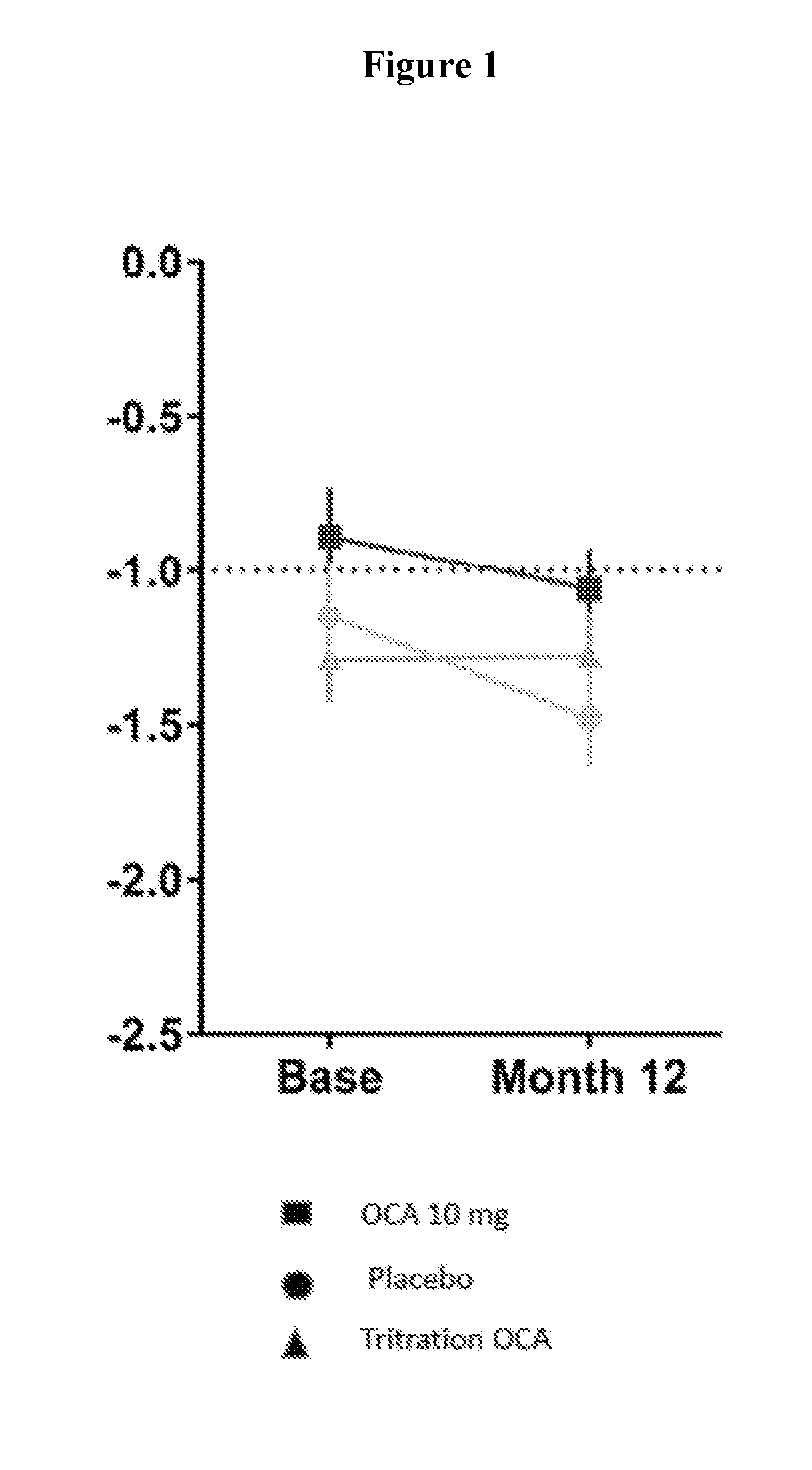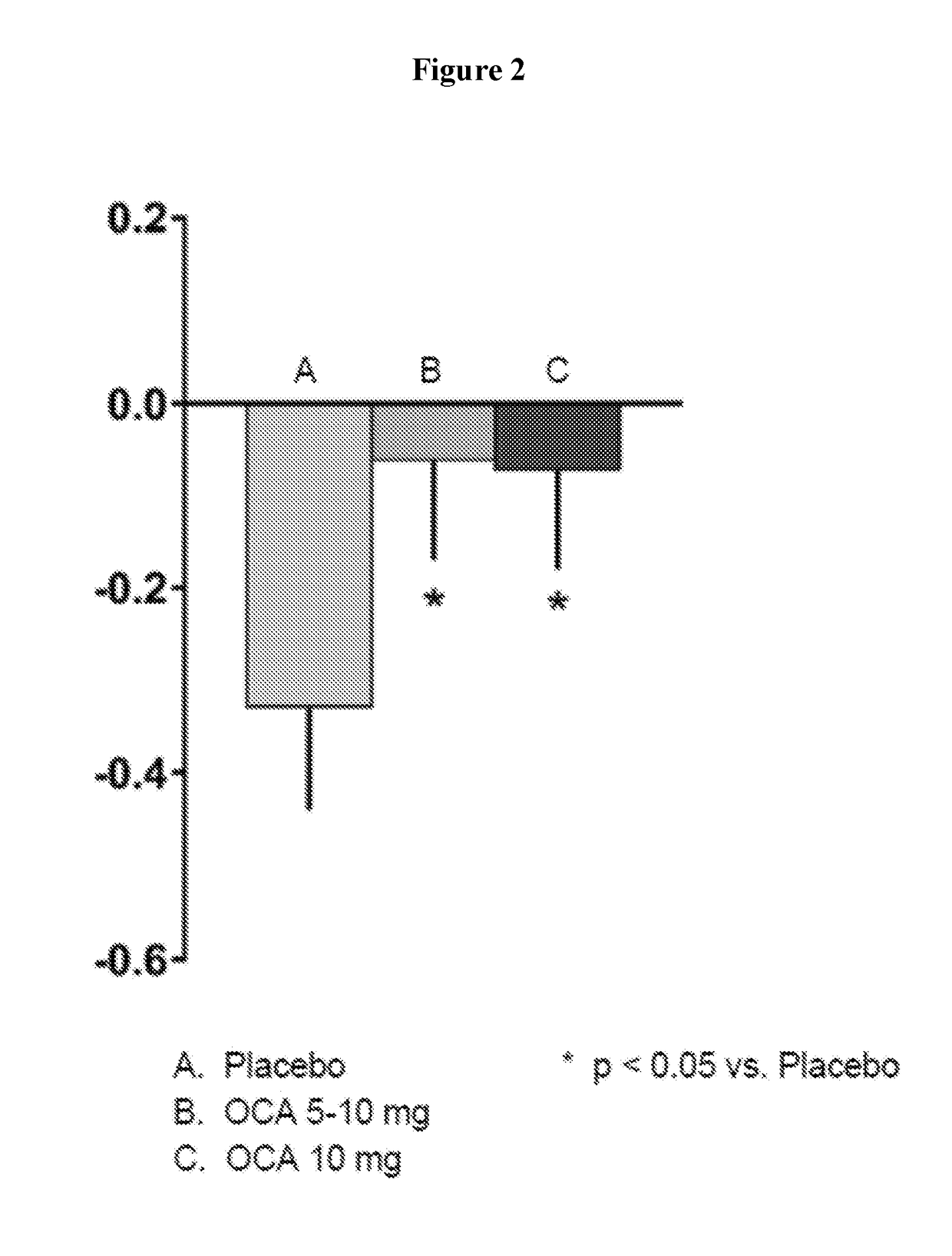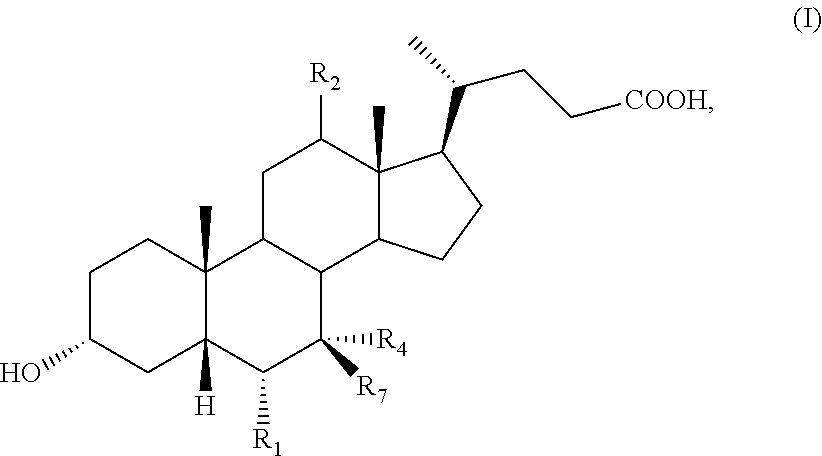Methods for modulating bone density
a bone density and bone density technology, applied in the field of bone density modulation, can solve the problems of high risk of osteomalacia, uncertain effects of total bone mass and bone strength, and modest effects of these treatments, so as to reduce the risk of, prevent, or alleviate the symptom of a diseas
- Summary
- Abstract
- Description
- Claims
- Application Information
AI Technical Summary
Benefits of technology
Problems solved by technology
Method used
Image
Examples
example 1
General Protocols
[0127]Patients are screened during a ≦1 to 8 week period prior to treatment to allow for the collection of repeat serum chemistry samples (at least 2 weeks apart), if necessary, to confirm pretreatment ALP and total bilirubin values. Eligible patients are randomized to three groups: (a), (b), or (c) as described below.
[0128]All of the following must be met for being eligible for treatment.[0129]1. Definite or probable PBC diagnosis (consistent with AASLD and EASL Practice Guidelines; [Lindor 2009; EASL 2009]), as demonstrated by the presence of ≧2 of the following 3 diagnostic factors:[0130]History of elevated ALP levels for at least 6 months[0131]Positive AMA titer or PBC specific antibodies[0132]Liver biopsy consistent with PBC[0133]2. At least 1 of the following qualifying biochemistry values:[0134]ALP≧1.67×ULN[0135]Total bilirubin>ULN but[0136]3. Age≧18 years[0137]4. Taking UDCA for at least 12 months (stable dose for ≧3 months) prior to Day 0, ...
example 2
[0177]Subjects with PBC±UDCA (if taking UDCA, patients were maintained on a stable dose) with ALP≧1.67×ULN or bilirubin<2×ULN were randomized to placebo (PBO), OCA 5 or 10 mg for 12 months. Subjects on 5 mg were titrated to 10 mg after 6 months (OCA Titration) based on clinical response and tolerability. Dual-emission X-ray absorptiometry (DEXA) scan was used to assess BMD in a subset of subjects prior to and following 12 months of OCA or placebo treatment. Results of the femoral neck and lumbar spine (using T-score, Z-score, and BMD) were summarized in the Tables 1-6 below. Changes from baseline at Month 12 were analyzed using an ANCOVA model with baseline values as a covariate. Osteopenia and osteoporosis were based on WHO thresholds: T score −1.0 to ≦−2.5 and respectively.
[0178]Of the 216 subjects enrolled in the trial, 122 had DEXA scans at baseline and Month 12 (85% Female; 22%≧65 years of age; 52% postmenopausal). Baseline ALP was 318±102 U / L and 91% of subjects took concomita...
PUM
| Property | Measurement | Unit |
|---|---|---|
| time period | aaaaa | aaaaa |
| time period | aaaaa | aaaaa |
| time period | aaaaa | aaaaa |
Abstract
Description
Claims
Application Information
 Login to View More
Login to View More - R&D
- Intellectual Property
- Life Sciences
- Materials
- Tech Scout
- Unparalleled Data Quality
- Higher Quality Content
- 60% Fewer Hallucinations
Browse by: Latest US Patents, China's latest patents, Technical Efficacy Thesaurus, Application Domain, Technology Topic, Popular Technical Reports.
© 2025 PatSnap. All rights reserved.Legal|Privacy policy|Modern Slavery Act Transparency Statement|Sitemap|About US| Contact US: help@patsnap.com



